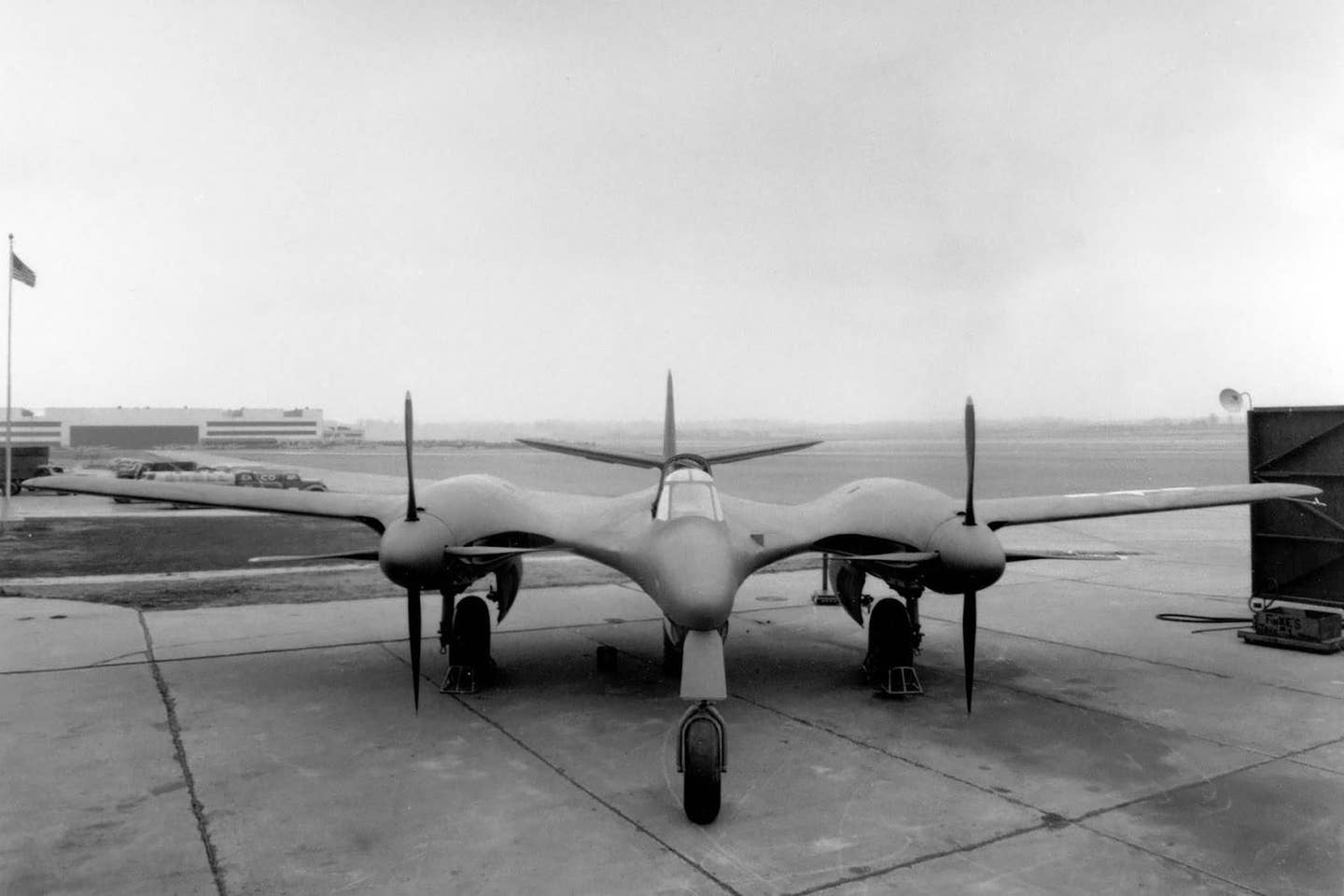McDonnell’s ‘Moonbat’ Definitely Stood Out in the Early 1940s
The XP-67 was developed in the hopes of outperforming the Air Force interceptors of the time period.

The extensively sculpted airframe of the XP-67 stood out in stark contrast to existing types of the 1940s. [Photo: U.S. Air Force]
Historically, some of the most compelling aircraft prototypes have served as launching pads for new and emerging technologies. From clean-sheet engine designs to new aerodynamic concepts to unusual airframe layouts, X-planes from all eras were smorgasbords of cutting-edge engineering. And in the early 1940s, McDonnell combined a multitude of new ideas into its XP-67 in the hopes its performance would eclipse existing interceptors.
A safe, conservative method of introducing a new aircraft design might be to incorporate only a few completely new and unproven concepts at a time. This philosophy enables engineers to isolate the concepts and evaluate them for more widespread use. But in the case of the unique McDonnell XP-67, nicknamed the “Moonbat,” it seems airframe and powerplant engineers alike were given carte blanche to reimagine every component and integrate all the resulting ideas into a single aircraft.
At first glance, the XP-67 has the appearance of an aerodynamic study. With a semi-blended-wing body, a laminar-flow airfoil, and rounded, filleted junctions where different surfaces met, the airframe took on a one-piece, organic appearance. The effort spent on sculpting the airframe in such a manner was motivated by a blistering top speed target of 472 mph—a number McDonnell promised to the military in an effort to win a lucrative production contract.
However unconventional the aerodynamic aspects of the airframe may have been, additional complexities lurked beneath the skin. These came in the form of new and unproven Continental XL-1430 inverted V-12 engines. Liquid-cooled and rated at 1,350 hp each, these engines held much promise when they were developed in the 1930s.
They delivered roughly 1 hp per cubic inch of displacement, making them both smaller and more powerful than the Rolls-Royce Merlins of the same era. Unfortunately, this came at the cost of an inferior power-to-weight ratio. Together with various airframe modifications, the engines contributed to a massive increase in the XP-67’s weight as the development of the aircraft progressed—from an initial target weight of 18,600 pounds to an ultimate weight of more than 25,000.
While weight climbed, aerodynamic challenges emerged. The uniquely sculpted airframe, optimized for efficiency at high speeds, presented severe downsides in other aspects. Despite creative leading-edge intakes to feed cooling air to the radiators, the engines overheated and even caught fire during initial taxi tests and ground run-ups. This was likely attributable to the extremely tight cowlings and ductwork that favored low drag above all else as opposed to fundamental issues with the engines themselves. But it was nevertheless a problem, and when the first flight took place in January 1944, it had to be cut short after several minutes due to overheating in flight.
Engineers quickly revised the engine cooling to address these issues. Less easily solvable, however, were the aerodynamic and handling problems pilots discovered on subsequent test flights. The XP-67 exhibited concerning instability, leading to doubts it would be able to recover from a spin. Additionally, the climb performance fell short of expectations, the approach speed increased from 76 to 93 mph, and the aircraft only ever reached a maximum speed of 405 mph—67 mph lower than the target.
To solve some of these issues, the design team explored alternative engine and propeller options. While the unproven Continental had shown promise and was competitive in the preceding decade, newer developments of the Rolls-Royce Merlin had surpassed its specifications, and jet engines were beginning to emerge as the way forward. The XP-67 and its multitude of concerns appeared to be on borrowed time.
In September 1944, time ran out. During a test flight over St. Louis, an engine caught fire in flight. Although the pilot made a successful emergency landing at Lambert Field (KSTL), the flames spread to the rest of the airframe before emergency equipment could extinguish them, and the aircraft was destroyed. Faced with mounting challenges and a second prototype that was far from completion, the program was canceled and both examples were discarded.

Sign-up for newsletters & special offers!
Get the latest FLYING stories & special offers delivered directly to your inbox






